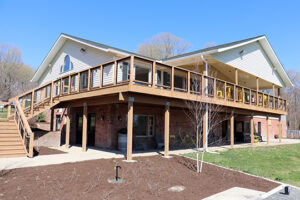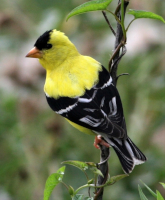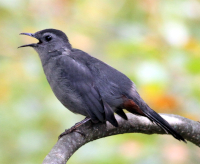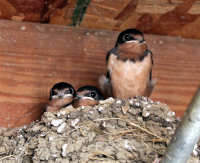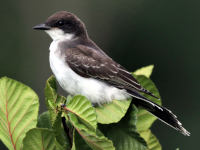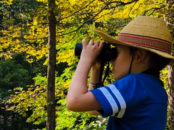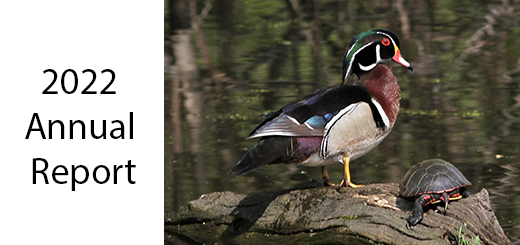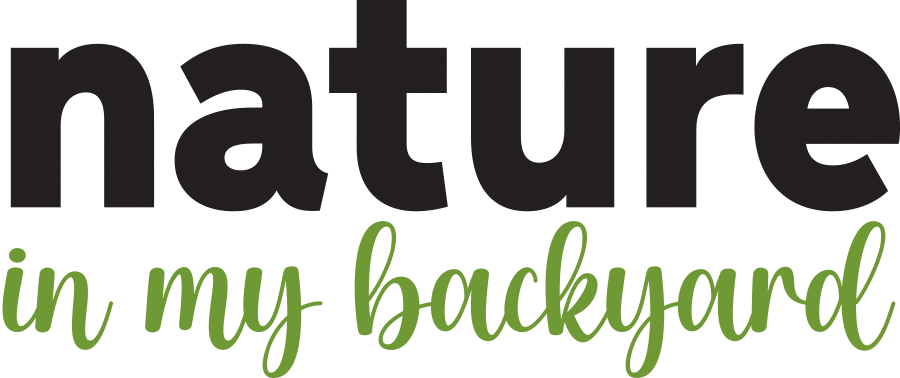Are the ASGC sanctuaries open to the public?
Yes! We welcome hikers and birdwatchers. Please keep in mind that they are not public parks but private property and wildlife sanctuaries maintained primarily for wildlife and not for people; we do NOT welcome vehicles, ATVs, mountain bikes, free-running dogs or campfires. Camping, hunting and fishing are prohibited. No materials, plants, or animals may be removed or introduced. Please stay on the trails. Wandering throughout the marsh, forest and field is not allowed. Please pack out everything you pack in, and respect the plant and animal life that lives there.
What hours are the sanctuaries open?
From dawn to dusk for most properties. Hach-Otis is open from dawn to 4:00pm.
Where are the sanctuaries and where should I park?
Aurora Sanctuary: located north of Pioneer Trail a few hundred yards east of Page Road in Aurora, Ohio (Aurora location map).. Park on the north side of Pioneer Trail in the Bretsnieder Park parking lot just 50 yards east of the sanctuary entrance.
Hach-Otis Sanctuary: located at the end of Skyline Drive off of River Road in Willoughby Hills, Ohio. Park only in the Audubon lot at the end of Skyline Drive.
Molnar Sanctuary: located on the west side of Page Road a few hundred yards north of Mennonite road in Aurora, Ohio (Aurora location map). Park on the east side of Page Road at the dog park. During scheduled programs parking is in the Molnar parking lot on the west side of Page Road 100 yards north of the dog park.
Novak Sanctuary: located about 3/4 of a mile north of the intersection of Townline Road and Ohio St. Rt. 82 in Aurora, Ohio (Aurora location map). The sanctuary lies both to the west of Townline Rd in Aurora City limits and east of it in Mantua Township, behind the Novak Education Center at 382 Townline Road. Park just south of the Education Center.
I have found a sick or injured bird. What should I do?
Contact a wildlife rehabilitation center like Penitentiary Glen Lake Metro Park 440-256-2131, Medina Raptor Rehabilitation Center 330-283-4988, or Akron Raptor Rehabilitation Center 330-745-2947
How do I become a member of the Audubon Society of Greater Cleveland?
Please go to our Join Page for details and to download a membership form.
I’m a member of the National Audubon Society. Am I automatically a member of the ASGC?
It depends. The National Audubon Society (NAS) will assign you to a local chapter based on your zip code. See the zip codes that are assigned to ASGC.
Which field guide should I buy?
There are a number of field guides on the market and you need to decide if you prefer photos, paintings, or computer-enhanced photos. Photos depict one single individual bird and like us there are individual differences. Paintings are done by artists who study dozens of specimens and compile an over-all look. Computer-enhanced photos compile the same type of images and many field guides are now going to that format.
Ohio is easily covered by most Eastern U.S. field guides. Peterson was the guide to which all modern guides model themselves. The Sibley field guide (images are paintings) for the Eastern U.S. is also very good. Kaufman Field Guides are computer-enhanced images.
If you want a guide specifically for Ohio my favorite is Jim McCormac’s Birds of Ohio because the paintings show the plumage likely to be seen while the bird is in Ohio and it has maps that show the time of year that the bird is in Ohio. It also has a nice write up describing the bird’s habits, nesting, feeding, and species most likely to be confused. The Sibley Guide is my favorite Eastern U.S. guide because it shows several plumage possibilities. Maps are also important as they tell you when to expect a certain species. –Jim Tomko
I am a novice birder with a limited budget. What kind of binoculars should I buy?
It is always best to spend as much as is comfortable for your budget. Optical quality and durability are extremely variable. Nothing is more frustrating than bumping a budget binocular on a tree knocking the optics out of alignment and it costs more to repair than the binocular is worth. A binocular with 7x or 8 magnification with at least a 35mm objective lens is a great birding binocular because it is not too heavy and there is enough magnification to see bird details. The binoculars should be waterproof. Fully coated lenses eliminate distracting glare and reflections off the lenses. Phase corrected optics will give the brightest images. Those who wear glasses will need an eye relief of at least 17mm to view the widest image. Retractable eyecups are excellent if the binoculars are to be shared. Try the binoculars out as they need to feel comfortable in the hand.
I have not received my June newsletter. Whom should I contact?
We only publish newsletters nine times a year, September through May.
How can I receive my newsletter electronically instead of in the mail?
Contact Us and request the electronic version.
What condition are the trails?
The trails are mainly hard packed mud with short board-walks through particularly wet sections. November through May it is best to have waterproof boots that you don’t mind getting muddy. In the summer after several days of rain there can be some slippery and sloppy stretches. The Aurora, Molnar, and Hach-Otis have typical loop trails. The Novak trail is an in and out on the same trail. The trails in Aurora, Molnar and Novak are about 2 miles long. The Hach-Otis trail is a little shorter.

